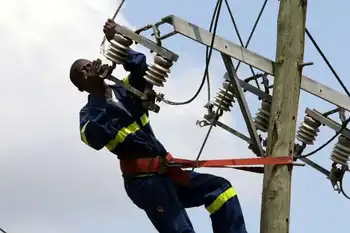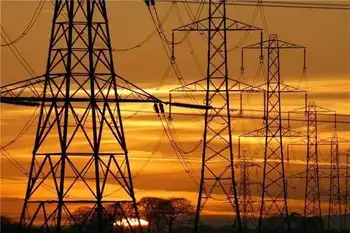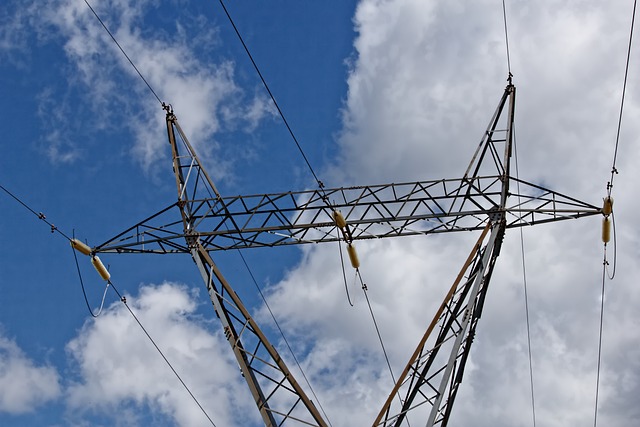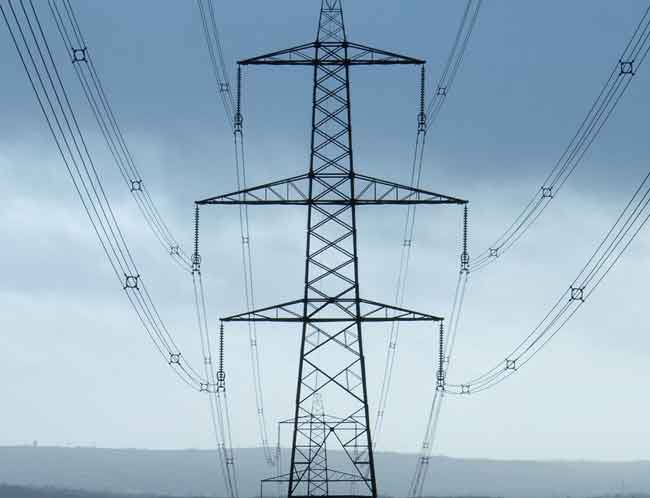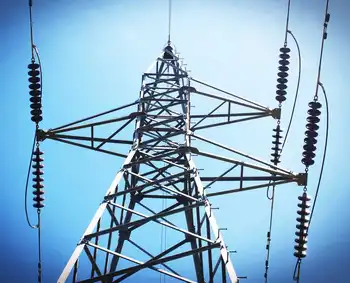Neighbours confident of Deep River reactor
By Toronto Star
Arc Flash Training CSA Z462 - Electrical Safety Essentials
Our customized live online or in‑person group training can be delivered to your staff at your location.

- Live Online
- 6 hours Instructor-led
- Group Training Available
He takes a drag from a cigarette and pauses. "There is no concern at all," says Gutzman, 40, as tranquil as the Laurentians behind him and the community he calls home.
The "concern" in question centres on a nuclear research reactor – hidden and fortified about 15 kilometres down the river – that produces most of the world's medical radioisotopes. These include the Molybdenum-99 isotope that's crucial to detection and treatment of serious diseases such as cancer.
The National Research Universal, or "NRU," reactor was shut down Nov. 18, creating a worldwide shortage of isotopes and putting Canada under the spotlight of an international controversy.
The federal nuclear watchdog said the NRU was unsafe, and had been operating that way for 17 months in violation of its licence. It argued the local community would be put at "significant risk" if an earthquake or some other disaster struck.
So when the federal government bypassed the regulator, pushing through emergency legislation requiring the restart of the NRU, environmental groups protested it as a "dangerous precedent." Opposition parties, which eventually supported the legislation, questioned whether Atomic Energy of Canada Ltd., the Crown corporation that owns and operates the 50-year-old NRU reactor, was committed enough to safety.
"This issue didn't happen overnight. It's an outcome of failure and negligence over the last 17 months," says Liberal MP Omar Alghabra (Mississauga-Erindale), the party's natural resources critic. "How can you have confidence in that?"
But in Deep River, home to AECL's famed Chalk River Laboratories and ground zero to any potential nuclear disaster affecting the NRU, the reaction has been muted. AECL is the town's main employer. Most residents work for the company or its suppliers.
"You would not believe how calm people are around here about this," says Gutzman. "The people starting up the reactor are part of our community, they live in our community, they're my neighbours, and the people I work with, so I have full confidence in what they can do."
Gutzman, in many respects, is the voice of his community. He is half Algonquin Indian; his ancestors predate the town of Deep River, while his German-born father has a street named after him that runs along a subdivision he built.
Four years ago, Gutzman successfully ran for mayor of Laurentian Hills, a township 180 kilometres northwest of Ottawa that surrounds Deep River. It was an unusual move, given he was and remains associate editor of the North Renfrew Times newspaper.
In 1967, the year Gutzman was born, the NRU reactor at Chalk River had been operating for 10 years. Most of the 7,000 people in Deep River and Laurentian Hills have never known the community without the reactor, and are resigned to the fact it's there.
"If it blows, it blows," said a deliveryman at the Shemron Suites Hotel in downtown Deep River. A waitress at the Tree Top Restaurant, about a kilometre from the entrance of Chalk River Labs, shrugs when asked about safety.
"People want to compare it to Chernobyl, and that's just crazy," says Shemron manager Ron Perron, who praises the government for forcing the reactor back online.
Ann Aikens, the mayor of Deep River, says her office hasn't had any calls from citizens worried about their safety. "We have all grown up with AECL," she says. Adds Gutzman: "AECL isn't just a part of the community, they have a vested interest in the community."
Understanding this unwavering allegiance means understanding the history of Deep River and the surrounding area. The Chalk River Labs predate the town, which was a planned community built in 1944 by the federal government to house scientists and other lab workers.
In a 1958 Maclean's magazine article, Peter C. Newman called it a "utopian town" with "no crime, no slums, no unemployment and few mothers-in-law." He also described it as a suburb without a city. "Its 16 miles of asphalt terminate abruptly at a barrier of virgin jack pine."
The community's first task was building Chalk River's NRX nuclear reactor, which when completed in 1947 was the most powerful research facility in the world. One of its uses was to produce radioactive isotopes, giving life to an emerging field of medical applications where Canadian scientists developed expertise.
Having established its leadership in the area of nuclear research and medicine, the federal government aimed higher. In the late 1940s it began building the NRU, a more powerful successor to the NRX that was put into operation in 1957.
On top of producing medical isotopes, the NRU was the early testing ground for Candu reactor technology and fuels now used in Ontario's nuclear power plants.
There have been accidents. On Dec. 12, 1952, a power surge in the NRX reactor allowed release of dangerous radioactive neutrons and damaged the reactor core, forcing an evacuation of the area.
In 1959, a uranium fuel rod being removed from the NRU reactor caught fire and radioactive dust was spread through the 12-storey reactor building. It is estimated that nearly 200 workers were exposed to radiation from the two events as part of cleanup efforts.
In 1999, workers were exposed to significant radiation after entering a plutonium-contaminated building at Chalk River. AECL also has a history of dumping low-level radioactive sludge into on-site sand trenches.
Ole Hendrickson, a scientist and researcher who lives in neighbouring Pembroke, leads a group called the Concerned Citizens of Renfrew County and Area. He says radioactive waste from Chalk River's operations remains on site without proper treatment or storage, though he acknowledged recent attempts to clean it up.
"There's a pretty serious plume of contaminated sediment right in the river," says Hendrickson.
He calls it a "worrying situation" when a prime minister overrides a safety regulator and puts political pressure on a Crown corporation to quick-start a Cold-War-era nuclear reactor – one that's in violation of its operating licence. "Although the probability of an earthquake or something like this happening is pretty low, the consequences of something are pretty horrific."
But ask those on the streets of Deep River and the fears are overblown. "If I see a mushroom cloud overhead then I might worry," says a firefighter who lives two blocks from Chalk River Labs' main gate.
"This is the most unique community in probably all of Canada in terms of not having a not-in-my-backyard system," says Gutzman.
"We welcome nuclear development here. If there's any frustration at all, it's probably not with AECL, but with the regulator.
"The reactor has been going fine. It will go fine."





